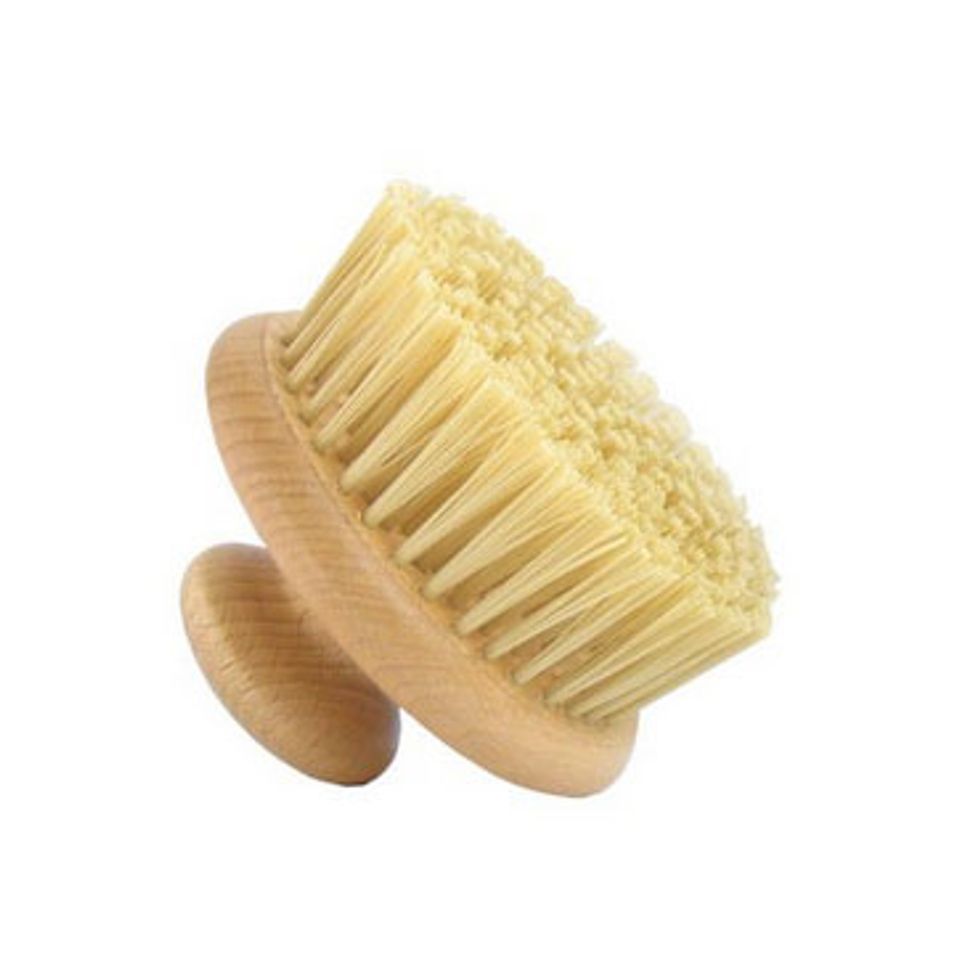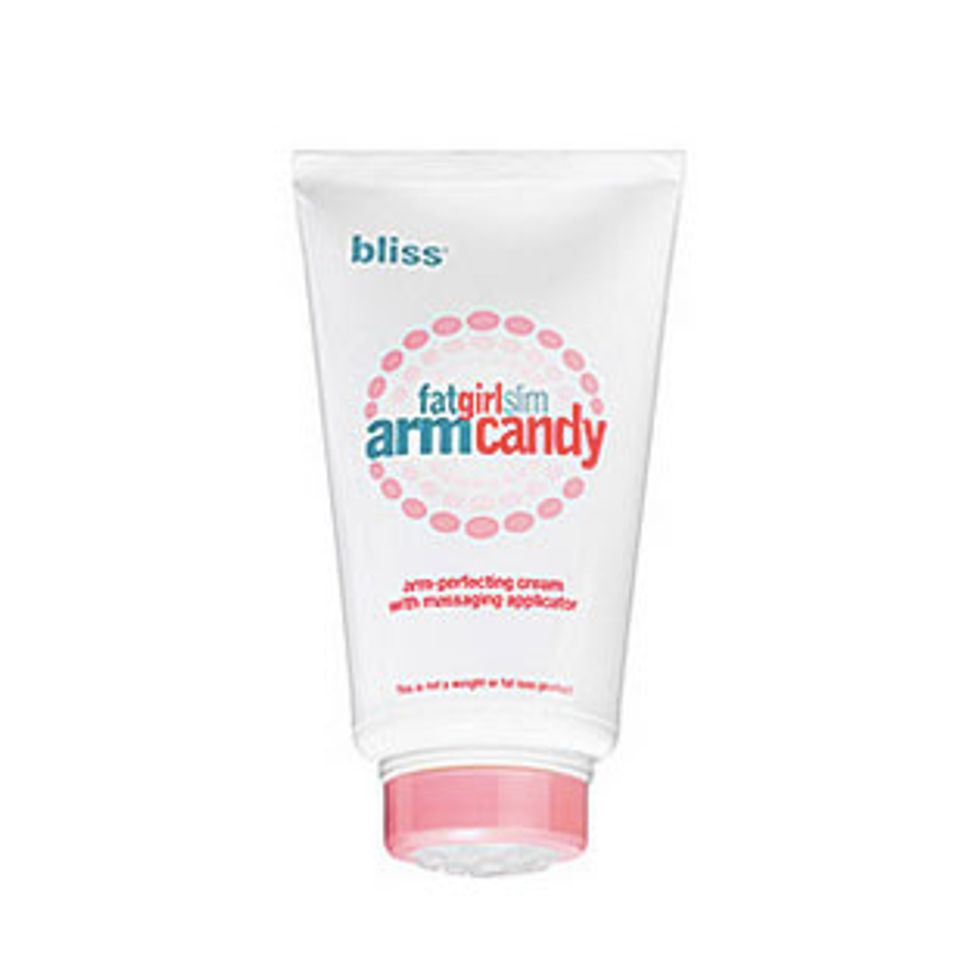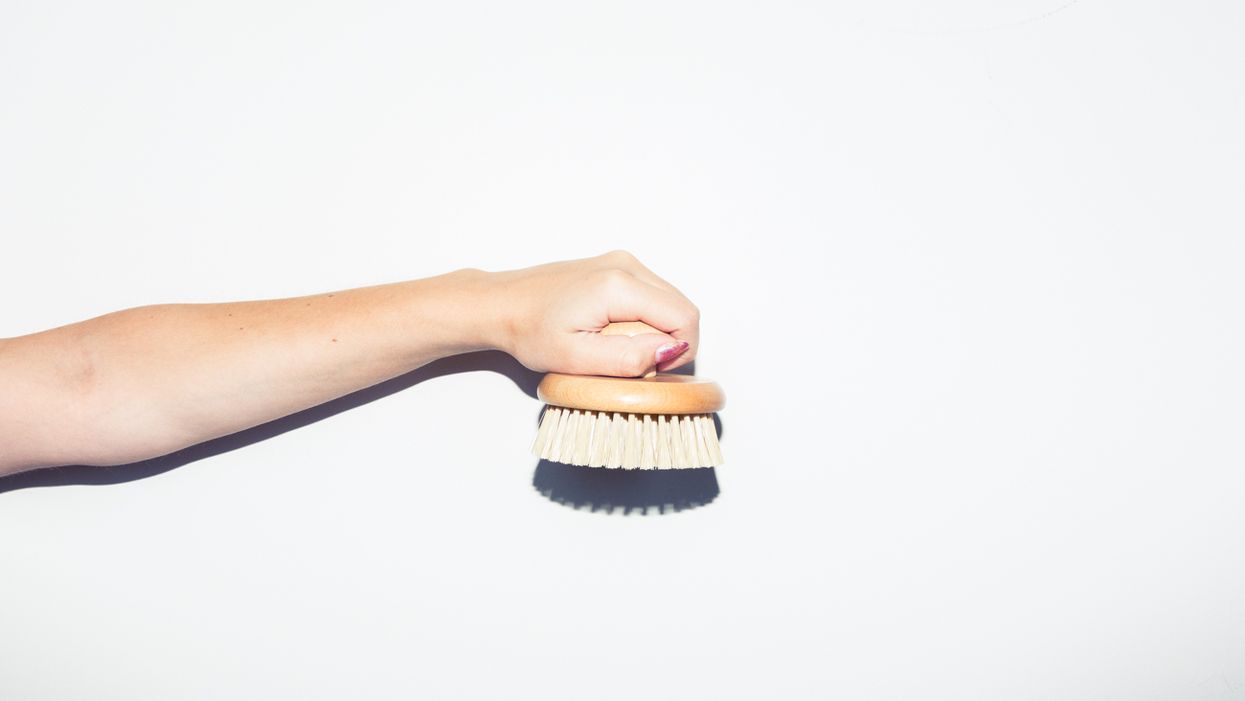
Okay yes, we've been known to lather ourselves in snail slime and pretty much any other questionable substance recommended by the trusty team of dermatologists, aestheticians and editors we interview on the daily, but when it came to the idea of dry brushing—a.k.a. scrubbing our DRY skin with a HARD-bristled brush—let's just say we were the slightest bit apprehensive. But then we were told the act helped to reduce the look of cellulite, and push comes to shov(ing froyo in our faces on the reg), we had our clothes in one hand and a scrubber in the other.
Before trading in our SoulCycle memberships for a lifetime’s worth of loofahs however, we decided to get the real deal on dry brushing and its benefits. Turning to global beauty chain Bliss, we enrolled Lisa Ariotti, Lead Technician at Bliss 57, to teach us the tricks of the exfoliating trade.
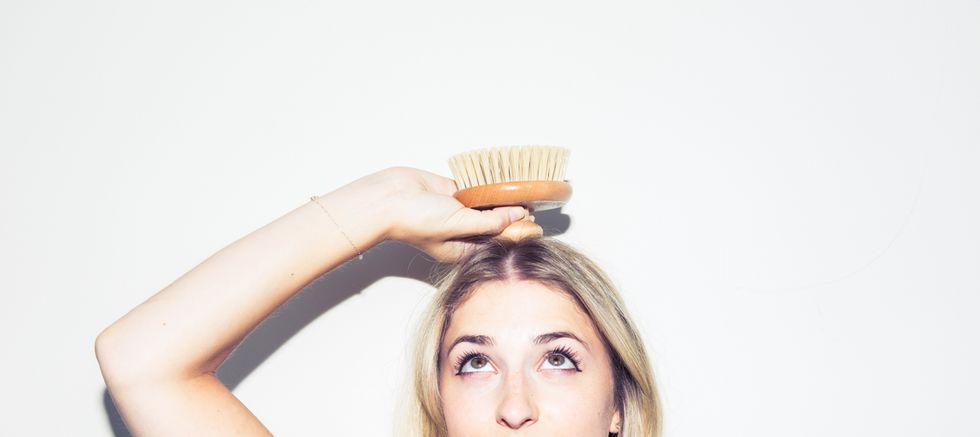
— The History —
“Skin brushing has been around in many cultures since ancient history, such as Hippocrates and the Greeks, the Japanese, and American Aboriginals. It has been used for centuries to keep the body healthy. The Comanche tribe, for instance, were known to scrub their skin with sand they took from Texas river bottoms.”
— The Science —
“Think back to your human biology class (minus the traumatizing exam) and answer these questions: What is the largest organ in the body? What is one of the most important elimination organs in the body, playing a large role in daily detoxification? What organ receives a third of all the blood that is circulated in the body? When the blood is full of toxic materials, what organ will reflect this with problems? What organ is the last to receive nutrients in the body, yet the first to show signs of imbalance or deficiency? The answer for all is skin!”

— The Benefits —
“Brushing stimulates the skin and keeps the skin pores clear so that the body can perspire freely. This is important to health because if the pores get clogged and the body can't perspire freely, the waste will back up. That backed up excess waste and toxins get trapped and become a burden to the skin, body and the other organs of elimination. Brushing your skin also stimulates oil glands that are in the second layer of skin, bringing this oil to the skin’s surface. This oil helps to protect the skin and increases the skin's health, suppleness and elasticity. Skin brushing also stimulates blood circulation, balances fat distribution and increases nerve function throughout the skin organ.”
External Benefits
· Exfoliates
· Eliminates dead skin cells
· Tightens skin (reduces appearance of cellulite)
· Helps with muscle tone
· Helps to more even distribute fat deposits
· Allows for better absorption of products
· Stimulates oil glands, and smoothes and softens the skin
Internal Benefits
· Stimulates elimination of cellular waste
· Aids in lymphatic drainage
· Increases circulation
· Improves metabolism
· Rejuvenates nervous system by stimulating nerve endings
· Helps the body’s natural detoxification process
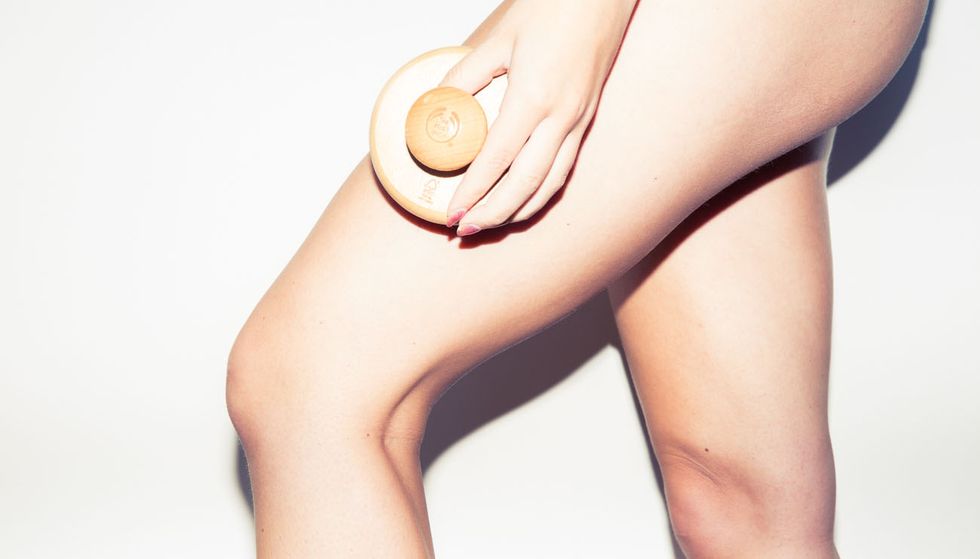
— The candidate —
“Dry brushing is good for anyone with cellulite or water retention. It is also great for dry skin or when you are swollen (retaining water) after a long flight or a day of standing—both the Bliss estheticians and sales force swear by dry brushing. Also, I personally use dry brushing on my arms to help reduce dry, flakey skin. After my long days of massage work I can say first hand that it significantly improves and reduces lymphatic swelling in my extremities.
Avoid brushing areas with skin cuts, wounds or rashes, as well as the facial area. If you have any type of cancer, please check with a competent healthcare provider to find out if skin brushing is okay for you.”
— The technique —
"Because dry brushing energizes and stimulates the body, most pros suggest doing it in the morning before you shower, but you can really do it any time of day you prefer.
· Start on the sole of your right foot, generally using long and light but brisk strokes. Get your ankle, shin, calf and knee.
· Then do the same on your left foot and lower leg. It helps if you can sit down.
· Standing up, next brush upwards on your right and then left thigh from the knee up. Move over to your abdomen, brushing that with a circular motion.
· Brush each arm, starting with the palm, brushing inward towards your heart. Gently brush the chest area in a circular motion—women should avoid the breast area.
· Brush the neck area by starting at the back of the neck and stroking with the brush towards the front (avoid your face).
· Use the handle to get your back, or better yet, have your mate do it for you."
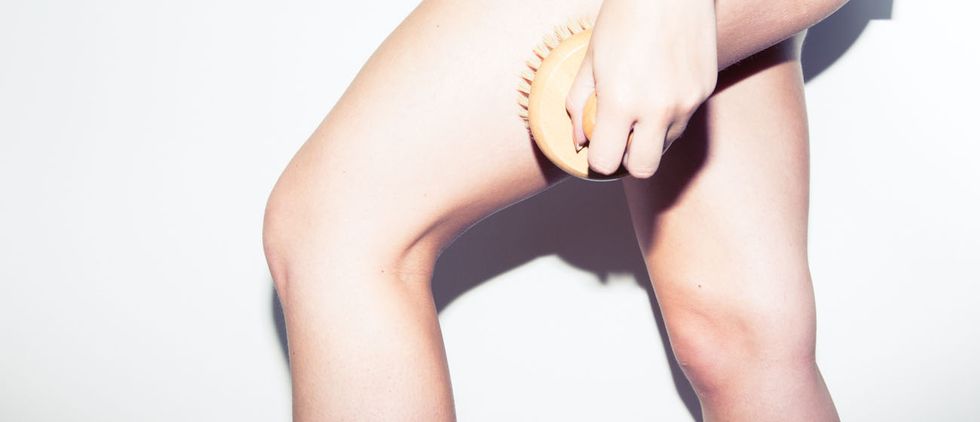
— The tools —
"If you are new to skin brushing, start with a loofah or a coarse natural fiber brush glove. Use those for a while to let your skin get used to the brushing sensation and then move to a skin brush. A skin brush has natural vegetable bristles. Since they are becoming more and more popular, you can find them pretty easily at just about any health food store. The ones with the handles are easy to use, maintain, and can reach your back. The Bliss line of Fat Girl Slim and Arm Candy products are excellent to use after a dry brush session to impart time released caffeine into the system and increase vascular flow."
— The Timing —
"It is best to dry brush in the morning to flush the body of metabolic waste created during the healing process of sleep. Dry brush daily or twice a day, prior to showering, when you are dry and your skin is free of oils or creams. Performing dry skin brushing before your shower or bath will help to stimulate your skin and wash away the flaked skin. Then do wet skin brushing while in your shower or bath. Always stroke towards your heart to best benefit your circulation.”
—Naomi Nachmani

